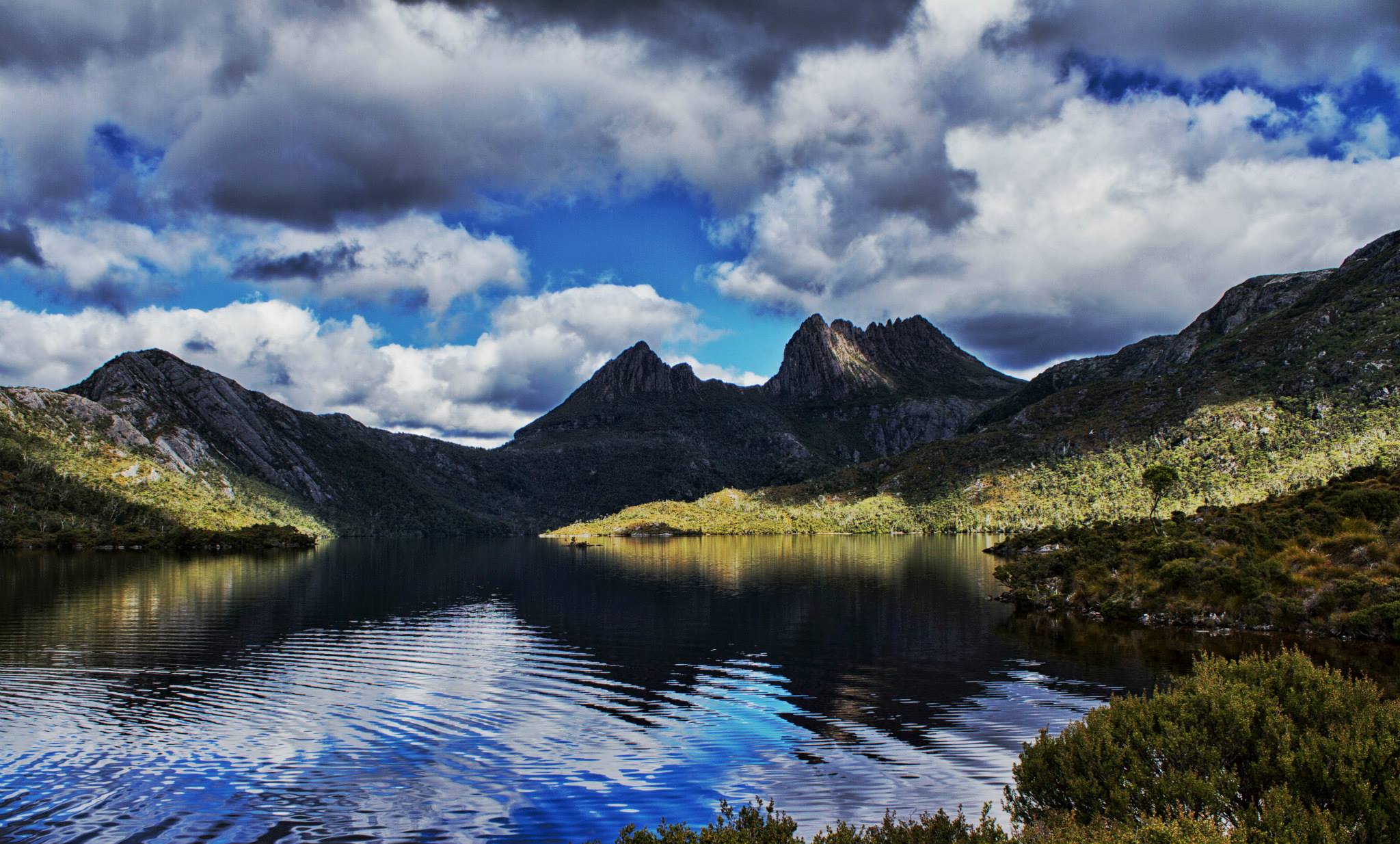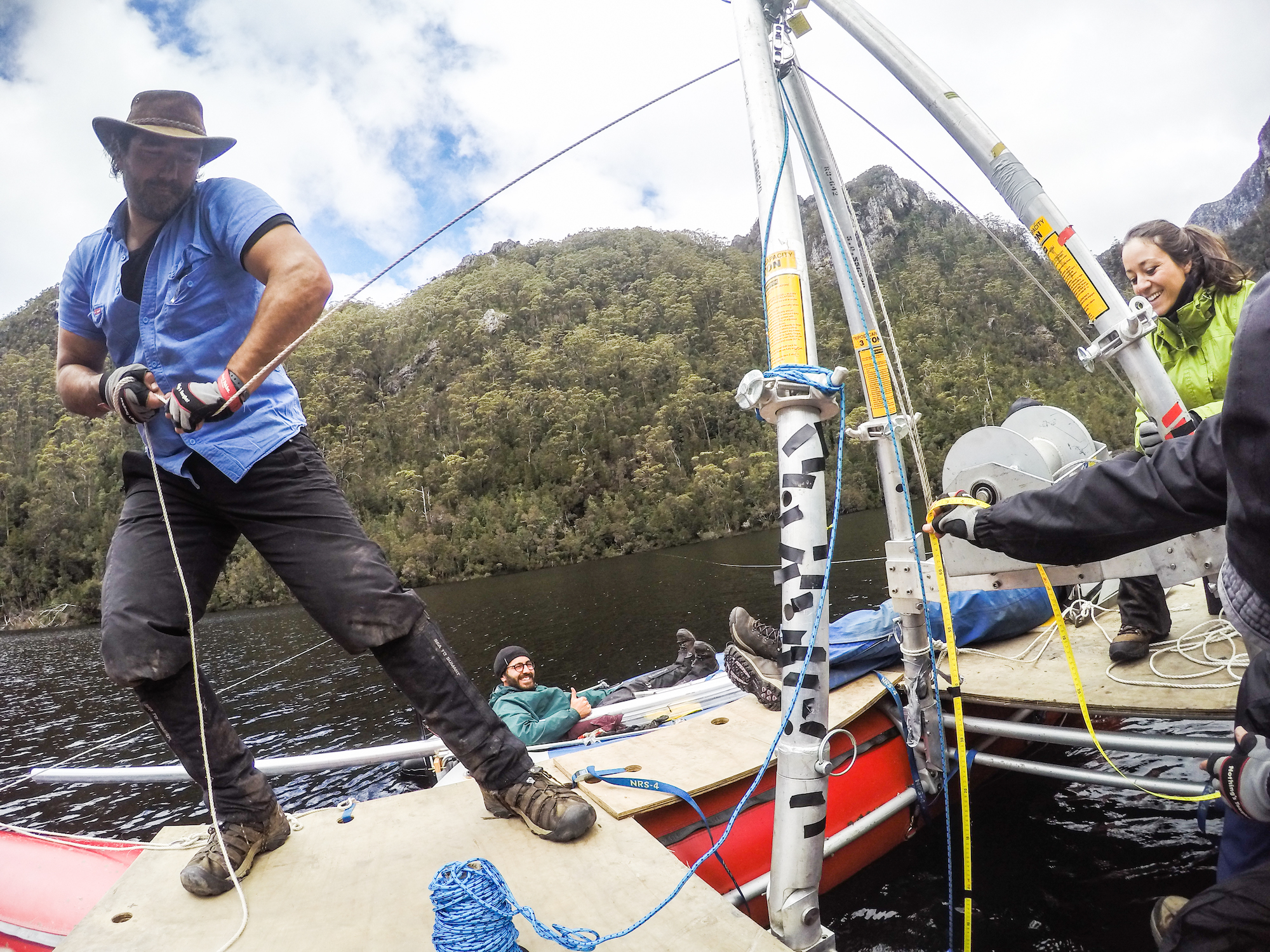The climate legacies in our lakes

Biogeographer Dr Michael-Shawn Fletcher tells of exploring ‘natural archives’ to piece together our environmental history – and shine a light on the future
Published 3 June 2016
I started off doing genetics. But with genetics, you never really get a sense of the actual thing you are looking at, it is all inference. When I was looking around to fill in my minor, I found these geography subjects and they just blew me away, it was the exact opposite. It was bringing everything in together; chemistry, biology, earth sciences, and still drew on my genetic background. I was taken by it.
Contemporary landscapes are the result of modern day processes and historical legacies. What I do is try to piece all that together and provide a time dimension. It’s like detective work really. You are given information that has been laid down, and then you investigate all the potential reasons why that information is there.
Various places in the landscape record information, and they are called natural archives, for example lake sediment, ocean floor, a stalactite, stalagmite, or tree rings. The natural archives that I look at are lakes, or bogs.
If you can imagine in the air right now, you are breathing in pollen, charcoal, dust, insects, everything. All that stuff is falling on top of lakes, and then settling at the bottom and being preserved. So it is reflective of what’s going on around the lake at the time.

What I do is take a core, or sediment sequence, and sequentially sample throughout the whole thing to build up a story through time. The things I mainly look at are pollen, because that is reflective of the vegetation, and charcoal, which is produced by fires. I have students who are looking at aquatic organisms like diatoms, and little aquatic bugs. I’ll also date the cores using radiocarbon and other radioactive isotopes to understand when things happen.
Once you have got all this wonderful information, you can understand what’s going on before, during and after periods of environmental change.

My postgraduate work involved piecing together the environmental history of a part of Tasmania, using information stored in swamps and bogs. It’s a curious landscape; all of our ecological models predicted it should be forest, but it is completely open. I was looking at the underlying reasons for this, and turns out it was people. Basically, people arriving about 40 thousand years ago altered the fire regimes and it has given us the landscape that we have today.
I did a post doc in Chile, which has a similar biogeography to Tasmania, but the main driver of long-term change over there was climate, due largely to a different timing of human arrival. People arrived in Australia so early, where people arrived into Chile only around 14,000 years ago, and that wasn’t early enough to create the same kind of disruption that was caused in Tasmania. Now I’m focused on both of those stories, but also looking at how climate is working in with the long-term human management of the landscape.

The way that European colonists are managing Australia is causing a few problems.
I see my new backyard as a little microcosm for the arrival of Europeans to Australia. I don’t know how to manage it, so some things are dying and some things are doing well. In the same way, Europeans have bought their conceptual baggage, their management regimes, and some of them are just failing and part of that is because we don’t really understand how the landscape came to be or how it responds to change.
What we have come to appreciate is that ecosystems don’t respond in a linear way. They shift suddenly when a threshold has been crossed. Hypothetically there are early warning indicators we can pick up that show a system has lost resilience and is vulnerable to switching.

So one thing we are trying to do is to unpack how do we measure resilience, how do we predict that an ecosystem is about to switch, and what are the factors involved. We are working to create a better predictive ability. We have been really concerned about climate changing over the past century or two, but we are dealing with a system that beats to multiple different rhythms in time and space. There are all sorts of patterns and scales that our natural systems behave, respond and operate in. If we can piece together how natural systems change both with and without human intervention, then we can have a better understanding of how things might change into the future.
– As told to Julia Cleghorn
Banner Image: Dove Lake under Cradle Mountain, in Tasmania’s northwest. Picture: Michael-Shawn Fletcher
